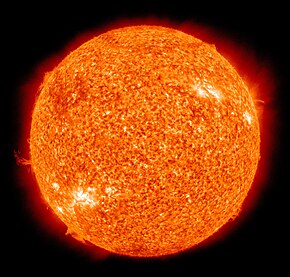Baking Soda and Vinegar Lab Report
By: Teodora Milenkovic 8A
November 29th, 2011
The guiding question: How does the amount of baking soda affect the length of its reaction with vinegar (acidic acid)?
Hypothesis:
I believe that the smaller amounts of baking soda such as the five grams and ten grams will react slower than the larger amounts. I think this because the larger amounts of sodium bicarbonate will completely “absorb” the vinegar with all of its powdery texture. This will cause the reaction to be much faster, because after the soda bicarbonate “absorbed” the vinegar, it wouldn’t have much acetic acid left to actually react with. However, with the smaller amounts, the two materials are more balanced, in my opinion, and therefore the reaction will be much clearer and much longer.
The controlled variable would be the amount of vinegar that is used for each reaction, because if the amount of vinegar was changed, the lab would no longer be fair and the data would not be valid. The independent variable would the soda bicarbonate, because we are constantly changing how much of it is being added to the vinegar. This is what essentially causes the different reactions that could be produced. Finally, the dependent variable is the length of the reaction(s) that should be measured in seconds
Materials:
· Vinegar (acetic acid)
· Baking Soda (soda bicarbonate)
· Pipette
· Test tube
· Paper towels
· Stopwatch
· Scale
· Spoon
· Safety goggles
Procedure:
1. First, you have to gather all the supplies that you need, and you also need to create a table, in which you will put all your information in. In this table, you should include a total of three columns. The first column should show tell about the amount of baking soda, the second one about the observations during and after the reaction, and in the third column the time for each reaction should be written.
2. Pour 20 milliliters of vinegar into a test tube.
3. Measure five grams of baking soda, and pour it inside the test tube with a spoon.
4. The moment you put the baking soda into the acidic acid, start the stopwatch.
5. Keep measuring the length of the reaction until the bubbling, fizzing, etc. stops (when the reaction is over).
6. Put in the time, as well as the observations into your data table.
7. Repeat the steps above for each amount of baking soda that you use for the rest of the reactions (10g, 20g, 30g, and 40g).
Data Analysis:
Amount of baking soda (g) | Observations during and after the reactions | Time for each reaction (s) |
5 | The mixture looked a little bit like elephant toothpaste. It was very foamy, and it spilled over the test tube quite a lot. After the reaction, only vinegar was left in the test tube, with a bit of foam left on top of it, probably because of the density. | 32.5 |
10 | The mixture was fizzier than the previous one, and it also lasted shorter. The state after the reaction was similar to the previous one, except the fact that the vinegar left at the end had more bubbles left on top of it. | 29.12 |
20 | The mixture was VERY fizzy, and quite a lot shorter than the previous ones. | 23.22 |
30 | The mixture didn’t exit the tube at all, it just bubbled a lot, and that is why it was very difficult to see when the reaction was over | 20.94 |
40 | This mixture didn’t really react, it just fizzed a little bit, and it than sunk to the bottom of the test tube, which was quite surprising. | 17.93 |
One of the most difficult parts of this lab was figuring out when the reaction was over, and when the stopwatch could be stopped. That is when it is important to pay close attention to what we have learnt in class, and what are some of the signs of chemical reactions. Some of the signs of a chemical reaction has taken place during this lab was the fizzing that occurred, as well as the foaming in the first reaction. When the foaming and the fizzing have stopped, the chemical reaction has probably taken place, and some bonds were broken, while new ones were created.
By examining the results that were gathered during this lab, it is not difficult to realize that it is not only the different chemical formulas that affect the chemical reactions, it is also the amount of atoms that are mixed with each other. If there are two much atoms of one substance mixed with another, it is possible that the results won’t be what you anticipated them to be.
When a greater amount of baking soda was added to a much smaller amount of vinegar, it looked as though the baking soda completely dried up the vinegar, and the reaction was hardly even noticeable. However, when only five grams of baking soda was mixed with vinegar, the reaction was much more visible and effective. This could probably be because the bonds between the acid, the sodium, and carbon were much easier to form when the mixture of the two substances was balanced, meaning that the number of the atoms made the bonds easier to form.
Even though we didn’t measure the temperature change that could occur during this experiment, it could be predicted that an exothermic reaction took place, because of the fizzing that was constantly happening in almost every reaction. Usually, when a substance fizzes, it is a sign that some sort of energy or heat has been released.
Conclusion:
The guiding question during this lab was “How does the amount of baking soda affect the length of its reaction with vinegar?” The hypothesis was partially correct, because it was mentioned that the larger amounts of baking soda will probably take longer to react with vinegar, because they would absorb all the acetic acid. However, the faster reaction in the larger amounts of baking soda is the fact that the atoms in both substances are not quite in balance with each other, so obviously the reaction wouldn’t be what should be expected (fizzing, foaming, etc.)
Further Inquiry:
When this lab was being done, I wondered quite a lot about whether the results would be the same if the variable that we kept the same was the amount of soda bicarbonate, and the variable that was being changed would be the amount of vinegar. It would be really interesting to conduct those tests, as well. It would be interesting to see and compare the results, especially because of the different textures of these two substances. Baking soda is quite powdery, while vinegar is a liquid.
If we could conduct this experiment again, I believe that we would have paid a little bit more attention to the actual reaction, and what was happening in the test tube, rather than just timing it and observing the after-effects. Also, we should have worn safety goggles, because there was a chance something could have happened, because we weren’t cautious enough.






